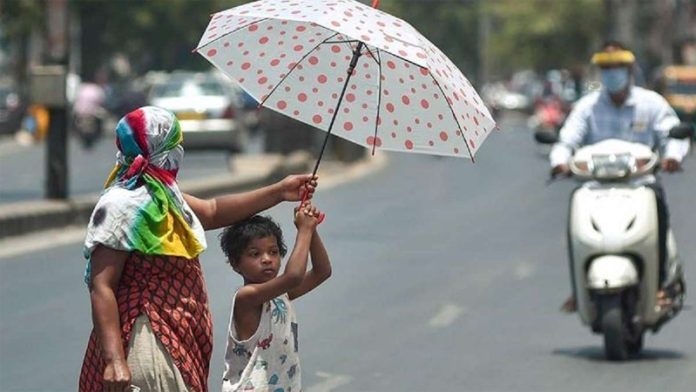Excelsior Correspondent
JAMMU, May 18: With no respite from the scorching heat in the region, the temperature in Jammu was today recorded as seasons’ highest at 41.6 degrees Celsius.
While the MeT office has predicted `no significant’ weather activity till May 27 in the region, the mercury continued its upward trend in Jammu for the last couple of days. It said the weather will mainly remain dry in the region from May 20 to 27.
With maximum temperature settling at 41.6 degrees Celsius in Jammu on Saturday, over three notches above the season’s average, the winter capital city experienced hottest day of this season so far.
Follow the Daily Excelsior channel on WhatsApp
However, the minimum temperature recorded in the winter capital city was near normal at 23.9 degrees Celsius, the MeT official said.
The city is reeling under heat wave conditions for the past one week and the maximum temperature in the city crossed the 40-degree Celsius mark for the first time this season on May 16. Since then, the temperature is increasing constantly.
The upward trend in the temperatures has prompted the local residents to seek early summer vacation in the schools of their wards.
A MeT official said Katra, the base camp for the pilgrims visiting Mata Vaishno Devi shrine, recorded a high of 36 degrees Celsius and a low of 22.5 degrees Celsius temperature on Saturday.
The Kashmir valley, on the other hand, continued to enjoy pleasant weather even as the mercury is hovering a few notches above normal for the past couple of days.
The summer capital Srinagar today recorded a high of 29.4 degrees Celsius and a low of 14.5 degrees Celsius, the official said, adding that the maximum and minimum temperatures were 4.2 and 3.1 notches above normal, respectively.
The Weather office has predicted isolated to scattered rains in Jammu and Kashmir over the next two days.
Meanwhile, the extreme scorching heat in large parts of north west India will continue for another five days, with Delhi, Haryana, Punjab, Rajasthan and Uttar Pradesh predicted to bear the maximum impact.
A brutal heat wave swept swathes of north India today, with the maximum temperature soaring to a scorching 47.4 degrees Celsius in southwest Delhi’s Najafgarh, the highest this season in the country so far.
The India Meteorological Department (IMD) on Saturday predicted a severe heat wave over the plains of northwest India during the next five days and a heat wave over the east and Central regions during the next three days.
The MeT office also issued a red warning for Delhi, Haryana, Punjab and west Rajasthan, stressing the need for “extreme care for vulnerable people”.
It issued an orange alert for east Rajasthan, Uttar Pradesh and Bihar and emphasised “high health concern” for vulnerable people, including infants, the elderly and those with chronic diseases.
The IMD also said warm night conditions are likely in Uttar Pradesh, Bihar and west Rajasthan over the next two-three days. High night temperatures are considered dangerous because the body doesn’t get a chance to cool down.
Increasing night time heat is more common in cities because of the urban heat island effect, in which metro areas are significantly hotter than their surroundings.
In view of the general elections in India, experts have warned of an increased likelihood of heat-related illnesses in people exposed to the Sun for prolonged periods or engaging in heavy work.
Researchers at Climate Central, a US-based group of climate scientists, said 543 million (54.3 crore) people in India will experience at least one day of extreme heat during May 18-21. “Human-caused climate change has made this intense heat much more likely. The high overnight temperatures make this event particularly alarming,” said Andrew Pershing, vice-president for science at Climate Central.
Heat waves can be deadly, with the elderly and children particularly at risk of heat exhaustion and heatstroke.
According to the World Health Organization, more than 1,66,000 (1.66 lakh) people died as a result of heat waves between 1998 and 2017.
Extreme temperatures can also impact economies. People are less productive during hot weather, even if they work indoors, while children struggle to learn in extreme heat.
A 2022 study said extreme heat resulted in labour productivity loss of USD 2.1 trillion equivalent in 2017.


